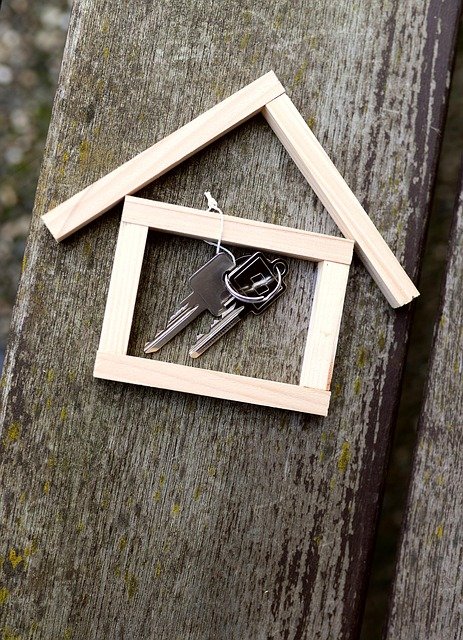Exploring Abandoned Houses: A Guide to Investment Tips
Abandoned houses appeal to urban explorers and investors alike. This guide explains legal steps, safety precautions, methods for locating vacant properties, and realistic acquisition costs. Learn how to assess risks, navigate liens and tax sales, and plan restorations for profitable or rewarding projects.

Introduction Abandoned houses draw curiosity and opportunity. Whether you’re interested in urban exploration or considering a rehab investment, these properties require careful attention to legal, safety, and financial details. This guide walks through what to check, how to find vacant homes, typical costs, and key renovation considerations.
- Legal Issues and Property Rights Accessing or buying a deserted property can be legally complex. Trespassing laws generally prohibit entering private property without permission, even when a building appears abandoned. Before visiting or making offers, confirm ownership through local land records, county assessor databases, or the recorder’s office.
Potential buyers should search for outstanding liens, unpaid property taxes, mortgages, or other encumbrances that could affect title transfer. Municipalities also often have ordinances governing vacant properties, including maintenance requirements, registration programs, or demolition rules. Some paths to acquisition include tax sales, foreclosure auctions, bank-owned (REO) purchases, and private sales; each route has different legal and procedural steps. Engage a real estate attorney or title company when in doubt to avoid legal pitfalls.
- Safety and Structural Hazards Abandoned buildings can present serious physical dangers. Common structural problems include weakened or rotted floor joists, sagging roofs, failing foundations, and unstable stairways. Other hazards to anticipate are exposed nails and glass, deteriorated stair treads, and falling debris.
Environmental risks include mold, mildew, asbestos insulation or siding, lead-based paint, and animal or insect infestations. Old or damaged electrical systems and gas lines may also pose fire or electrocution risks. For any exploration or inspection, never enter alone, wear appropriate PPE (sturdy boots, gloves, respirator or dust mask, and eye protection), and consider hiring a certified inspector before any renovation work begins. Always assume a structure is unsafe until proven otherwise.
- How to Locate and Identify Vacant Properties There are several reliable sources for finding abandoned or vacant homes: - Local government resources: tax assessor records, code enforcement lists, and vacant property registries. - County recorder or clerk: deed history and foreclosure records reveal ownership and liens. - Real estate channels: MLS, foreclosure auction listings, REO departments at banks. - Public GIS and mapping tools: visual layers sometimes show utility disconnections or long-term vacancy.
On-site signs of abandonment include overgrown yards, stacked or unopened mail, boarded or broken windows, disconnected utilities, and visible neglect. Neighborhood contacts, local real estate investors, and online forums can also offer leads. Some cities run programs or auctions specifically to sell vacant properties; check municipal websites for such initiatives.
- Cost of Acquiring an Abandoned House Purchase price depends heavily on location, condition, and the acquisition method. Expect wide variation, and always factor in additional costs beyond the sale price.
Typical acquisition methods and cost ranges: - Tax sale: Often the lowest entry price, commonly between about $5,000 and $50,000, but buyers must pay outstanding back taxes and may inherit liens. - Bank-owned (REO): Properties repossessed by lenders usually sell for $20,000 to $200,000 depending on market and condition; these typically require substantial renovation. - Direct purchase from an owner: Prices can range from roughly $1,000 (in distressed transfers) to $100,000 or more; expect legal fees and repair bills.
Additional expenses to budget for include legal and closing fees, title insurance, back taxes and lien payoff, utility reconnections, and renovation costs. Price estimates change over time and by region; perform independent due diligence and secure correct valuations before committing funds.
- Renovation and Restoration Considerations Restoring a neglected house often requires significant investment and project management. Common renovation tasks include: - Structural repairs: foundation stabilization, framing replacements, roof repair or replacement. - Systems upgrades: full rewiring, new plumbing, HVAC installation, and gas safety checks. - Health and containment: asbestos and lead abatement, mold remediation, and pest control. - Modernization: insulation, windows, energy upgrades, kitchen and bathroom updates.
If the property is historic, specialized materials and preservation techniques may be required to meet preservation standards while complying with modern building codes. Permits and inspections are typically mandatory for major work; plan for permit fees and timeline delays. Consider phased renovations to spread costs, obtain multiple contractor bids, and maintain a contingency budget (often 10–20% or more) for unexpected issues discovered during work.
Conclusion Abandoned houses offer intrigue and potential rewards, but they also bring legal complexity, safety risks, and financial uncertainty. Whether your interest is exploration or investment, thorough research, legal clearance, professional inspections, and careful budgeting are essential. With the right preparation and expert support, these neglected properties can be transformed safely and lawfully into valuable homes or profitable projects.






